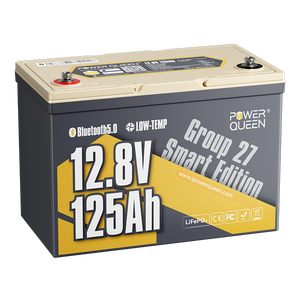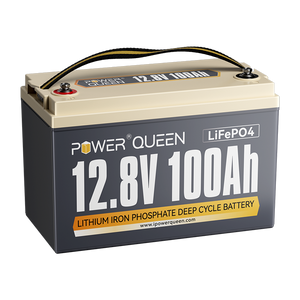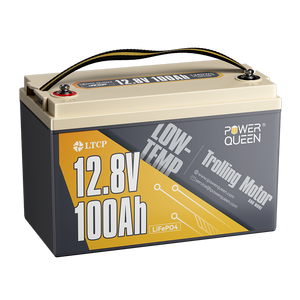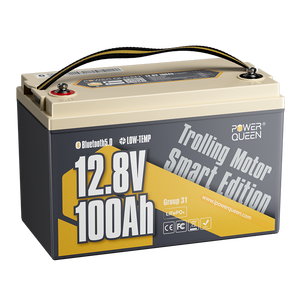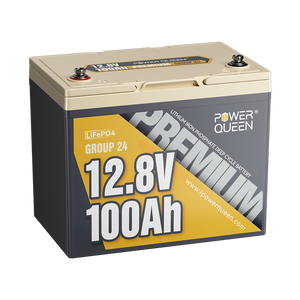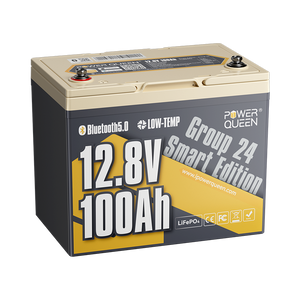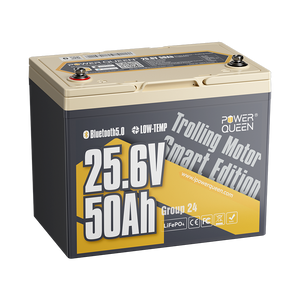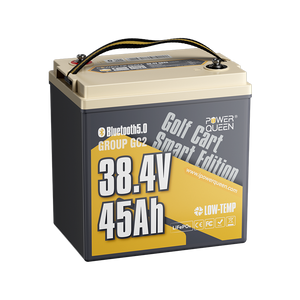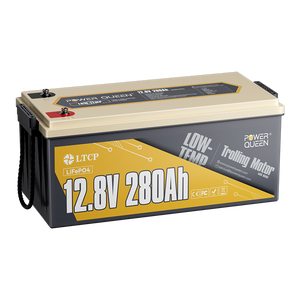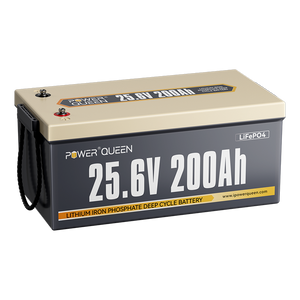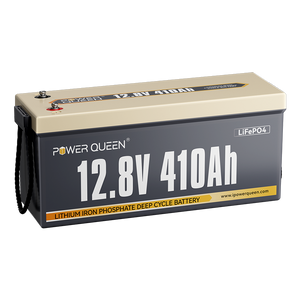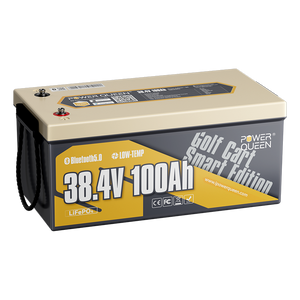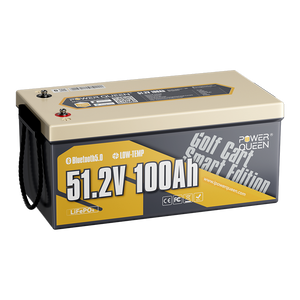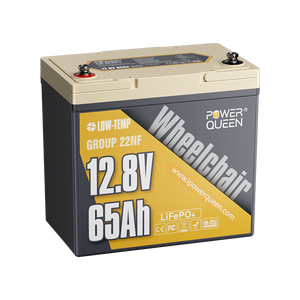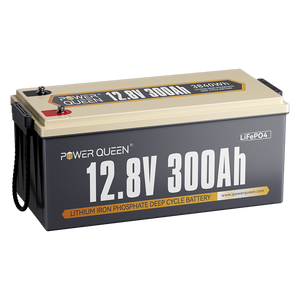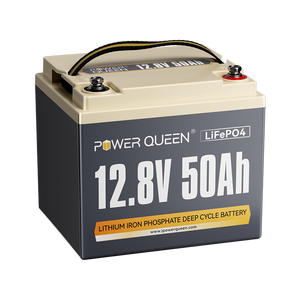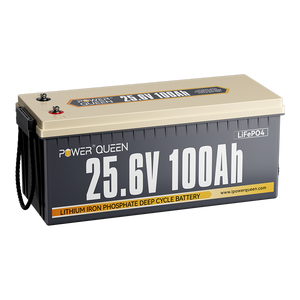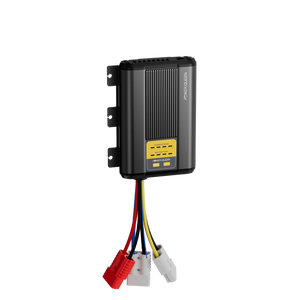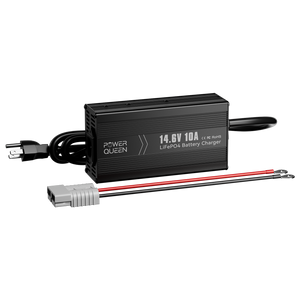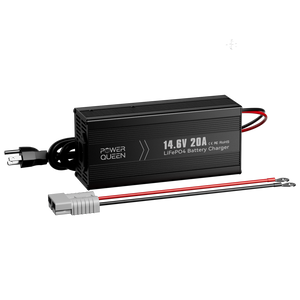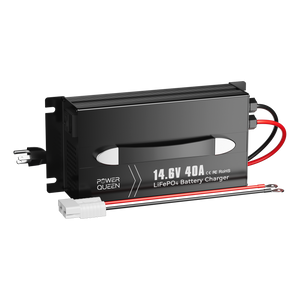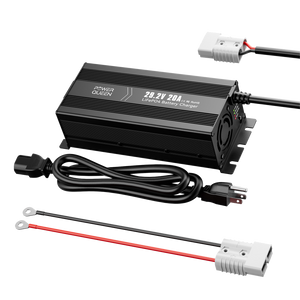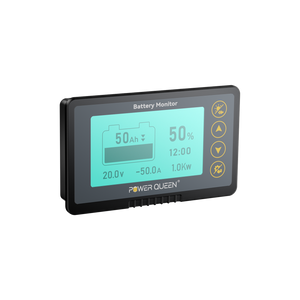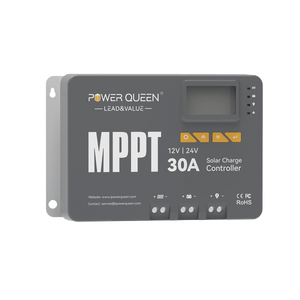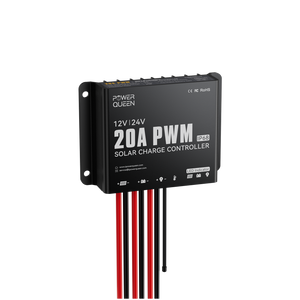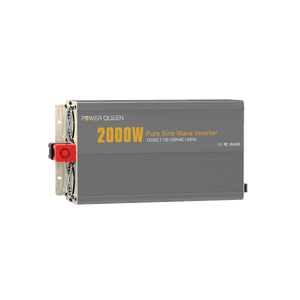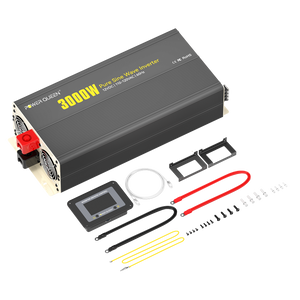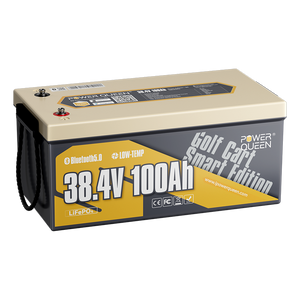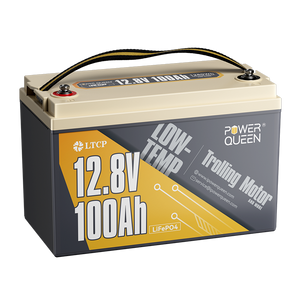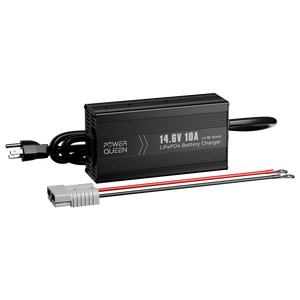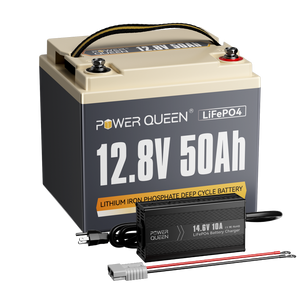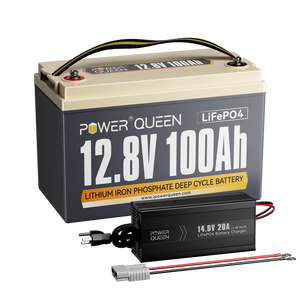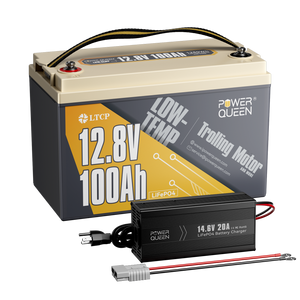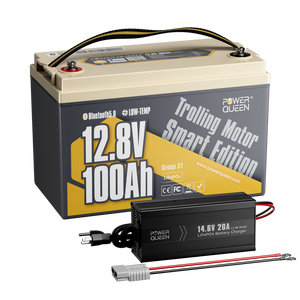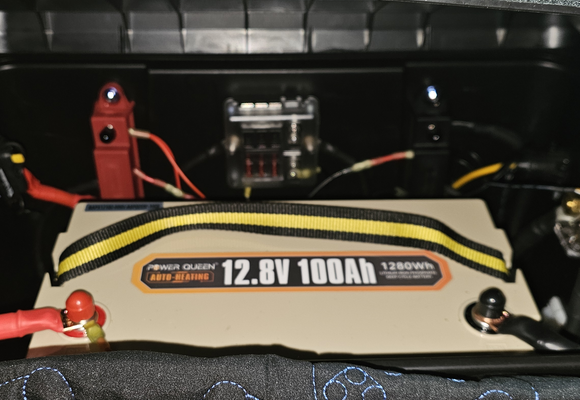Do I Require A Battery Monitoring System And How Does It Work
Do you find it frustrating to be unsure when the batteries you rely on may run out? If that's the case, consider using a Bluetooth battery monitor. This small device can turn your battery arrangement into an invaluable source of information.
Using one of these handy monitors, you can easily examine the status and usage of your battery. A Bluetooth battery monitor eliminates the guesswork from the equation.
Table of Content
- Part 1. Understanding Bluetooth Battery Monitoring
- Part 2. Battery Monitor System: Voltmeter VS Shunt-Based Monitor
- Part 3. Battery Management System vs. Battery Monitoring System
- Part 4. Can Lead-Acid Battery Equipped with Bluetooth Function?
- Part 5. Monitor The Battery with Your Phone: Lithium Battery with Bluetooth Recommended
- 5.1 Power Queen 12V 100Ah Group 24 Smart Deep Cycle Lithium Battery
- 5.2 Power Queen 48V (51.2V) 30Ah GC2 Golf Cart Smart Lithium Battery
- 5.3 Power Queen 48V (51.2V) 100Ah GC8 Golf Cart Smart Lithium Battery
- Part 6. How Can I Monitor The Battery Which Doesn’t Have Bluetooth Function
Part 1. Understanding Bluetooth Battery Monitoring
Bluetooth-enabled battery monitoring systems are intended to offer real-time information about the status and performance of lithium batteries. These systems are made up of sensors, battery management units, and Bluetooth modules that work together to collect and send important data to a central monitoring platform. This information covers voltage, temperature, state of charge, and overall battery health.
1.1 Advantages of Battery Bluetooth Function
1.1.1 Real-Time Monitoring and Analysis
Bluetooth technology makes lithium battery monitoring more accessible and convenient. Users can see real-time battery data on their smartphones, tablets, and other connected devices. This allows for instant examination of battery performance, which enables proactive maintenance and early diagnosis of potential problems. Bluetooth monitoring allows users to monitor their battery systems from any location, providing a level of flexibility and convenience that older monitoring methods did not offer.
1.1.2 Remote Management and Control
Bluetooth-enabled battery monitoring solutions also support remote management and control. Users can configure alerts and notifications for specific battery characteristics, allowing them to respond quickly to any issues. Furthermore, these systems can be equipped with advanced control features that allow users to remotely modify charging conditions, balance cells, and even trigger emergency shutdown procedures if necessary. This level of control is crucial, particularly in applications where the dependability and safety of lithium battery systems are critical.
1.1.3 Enhanced Safety and Efficiency
The use of Bluetooth technology in lithium battery monitoring improves safety and efficiency. By continuously monitoring important battery properties, possible safety issues can be discovered early on, lowering the chance of thermal runaway and other battery-related events. Furthermore, the ability to optimize charging and discharging operations using real-time data leads to increased battery efficiency and longevity, optimizing the return on investment for lithium battery systems.
Part 2. Battery Monitor System: Voltmeter VS Shunt-Based Monitor
A Battery Monitoring System (BMS) can use a variety of approaches to track the status and performance of batteries. A voltmeter and a shunt-based monitor are two popular methods of measurement.
2.1 Voltmeter
A voltmeter-based battery monitor detects the voltage of a battery or battery bank. It provides a direct readout of the voltage level, indicating the battery's state of charge.
However, it lacks specific information on the current going into and out of the battery, limiting its ability to analyze the battery's overall health and performance.
2.2 hunt-Based Monitor
By employing a shunt resistor, a shunt-based battery monitor gauges the current flowing into and out of the battery. With the monitor, the current flowing through the shunt may be precisely measured by monitoring the voltage drop across it.
More thorough details regarding the battery's general performance, health, and charge level are provided by this approach. For more accurate battery system monitoring and control, shunt-based monitors are frequently utilized, particularly in applications where exact information on current flow and battery performance is essential.
A voltmeter measures battery voltage in a straightforward and easy way, while a shunt-based monitor measures current flow to give a more complete picture of the battery's performance. This allows for a more accurate evaluation of the battery's overall efficiency, health, and state of charge.
Part 3. Battery Management System vs. Battery Monitoring System
When it comes to battery management and monitoring, a battery monitoring system and a battery management system (BMS) have various functions.
In order to guarantee that every cell in the battery pack runs within its safe operating parameters, a Battery Management System (BMS) is in charge of controlling the battery's charging and discharging. Usually, it has features like temperature monitoring, overcharge and overdischarge protection, and cell balancing.

All Power Queen lithium batteries come with BMS, which offers protection against short circuits, overcharging, overdischarging, overcurrent, and overtemperature. Low-temperature charging off protection is another feature of batteries like the cold-weather series.

A battery monitoring system, on the other hand, is dedicated to keeping an eye on the battery's condition and performance. To evaluate the battery's condition, charge level, and functionality, it gathers and examines data on its voltage, current, temperature, and occasionally impedance. Predictive maintenance, battery performance optimization, and guaranteeing the overall dependability of the battery system can all benefit from this knowledge.
In conclusion, a Battery Monitoring System is concentrated on collecting and evaluating data to evaluate the battery's performance and condition, whereas a Battery Management System (BMS) is mostly concerned with actively controlling the battery's operation and safety. For battery systems to operate effectively and safely in a variety of applications, both systems are essential.
Part 4. Can Lead-Acid Battery Equipped with Bluetooth Function?
Lead-acid batteries have been in use for a long time and are considered to be older technology. They are renowned for being reasonably priced and dependable. When contrasted with more recent battery technologies, such as lithium-ion batteries, they do have certain drawbacks.
The simpler design and chemistry of lead-acid batteries is one of the main reasons they usually lack Bluetooth capabilities and Battery Management Systems (BMS).
The energy density of lead-acid batteries is lower than that of lithium-ion batteries. They are therefore less able to retain energy per unit of volume or weight. Lead-acid batteries are often less susceptible to changes in charging and discharging conditions because of their lower energy density. Compared to lithium-ion batteries, they are more resilient to overcharging, overdischarging, and fluctuations in charging rates due to their chemistry and design.
Since lead-acid batteries are often less expensive than lithium-ion batteries, adding sophisticated technologies like Bluetooth and BMS would raise their price considerably and may reduce their marketability.
Because lead-acid batteries are frequently utilized in situations where remote monitoring and control are not as important, Bluetooth functionality for these batteries is also less popular. Because lithium-ion batteries are frequently used in portable gadgets and electric vehicles where remote monitoring and control might be more advantageous, there has been less demand for lead-acid batteries with Bluetooth capabilities.
Part 5. Monitor The Battery with Your Phone: Lithium Battery with Bluetooth Recommended
Do you want to use your phone to keep an eye on the battery statement? These three deep cycle lithium batteries are suggested to have Bluetooth functionality.
5.1 Power Queen 12V 100Ah Group 24 Smart Deep Cycle Lithium Battery
A notable development in battery technology, the Power Queen 12V 100Ah Group 24 Smart Deep Cycle Lithium Battery offers a number of state-of-the-art capabilities intended to give customers improved safety, control, and real-time monitoring.
This battery's Smart Bluetooth 5.0 technology facilitates smooth communication with the Power Queen APP, giving users real-time access to the battery's complete status and statistics. State of Charge (SOC), charge/discharge/idle state, battery voltage, current, power, remaining capacity, battery temperature, and life cycles are among the crucial parameters included in this.
A stable connection between the Bluetooth interface and the battery is ensured by the inclusion of Bluetooth 5.0, FCC/CE-RED certification, and successful Electromagnetic Compatibility (EMC) and Radio Frequency (RF) testing. By reducing outside signal interference, this stability gives consumers a dependable and continuous connection. The end effect is a degree of comfort, convenience, and peace of mind that conventional battery systems cannot match.
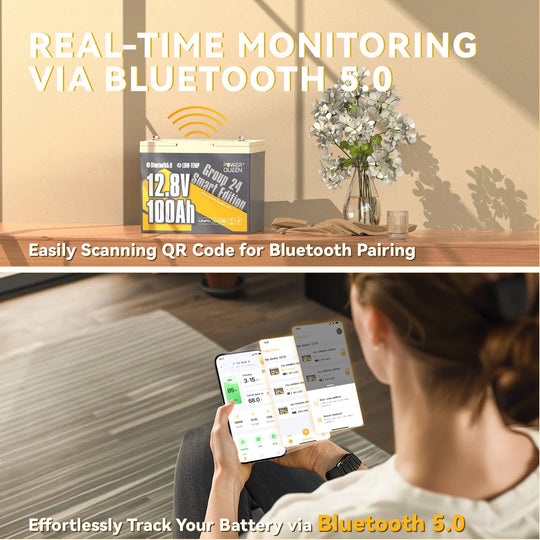
Furthermore, this LiFePO4 battery's sophisticated 100A battery management system (BMS) has more than 20 safety features and alerts. These include the following: pre-charging with a 30mF capacitive load; over-voltage protection; low-voltage protection; over-current protection with an auto-recovery function; short-circuit protection; overload protection; low-temperature protection; low-temperature charging cut-off protection; and smart Bluetooth functionality. This extensive set of safeguards guarantees the battery will function steadily, sensibly, and—above all—safely.
5.2 Power Queen 48V (51.2V) 30Ah GC2 Golf Cart Smart Lithium Battery
With a remarkable 2.56X increase in energy capacity over the conventional 6V 200Ah lead-acid GC2 battery, the Power Queen 48V (51.2V) 30Ah GC2 Golf Cart Smart Lithium Battery is a state-of-the-art power solution that is intended to improve your golf cart experience. The battery maintains the small size of the GC2 form factor.
Interestingly, the Power Queen battery has Bluetooth 5.0 built in, giving customers complete control and insights. Users can access a variety of monitoring functions, such as state of charge, voltage, current, discharge, idle status, power, capacity, temperature, state of charge, cycles, and battery temperature, by pairing the battery with the Power Queen app. Discharge may be conveniently controlled straight from a mobile device thanks to the app's smooth pairing process, which is made possible by barcode scanning.
The Power Queen 48V (51.2V) 30Ah GC2 Golf Cart Smart Lithium Battery raises the bar for dependability, efficiency, and user control in the field of golf cart power solutions with its potent features and cutting-edge connections.
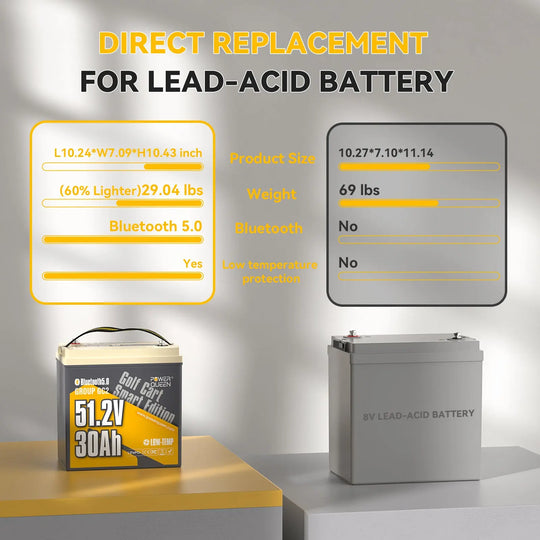
5.3 Power Queen 48V (51.2V) 100Ah GC8 Golf Cart Smart Lithium Battery
Furthermore outfitted with Bluetooth functionality. Six 6V 210Ah lead-acid batteries in usable energy make up one Power Queen 48V 100Ah bluetooth golf cart lithium battery. We make your golf cart 50% smaller and 80% lighter, which improves speed, maneuverability, and reduces wear and tear.
Numerous 48V street-legal carts, including LSVs, ATVs, NEVs, e-trikes, electric shuttle buses, and electric trike scooters (≤21ML/35KM/h), can use it.

Part 6. How Can I Monitor The Battery Which Doesn’t Have Bluetooth Function
Using a battery monitor is crucial if you want to keep an eye on your battery without using Bluetooth.
You can monitor the condition of your battery with a variety of non-Bluetooth battery monitors. An excellent option is the Power Queen 500A Battery Monitor with Shunt. Real-time data on the battery's voltage, current, temperature, and other pertinent characteristics are provided by these monitors, which usually attach directly to the battery. While some monitors have built-in screens that display this data, others can be linked to a tablet or smartphone using USB or other interfaces for data logging and monitoring.
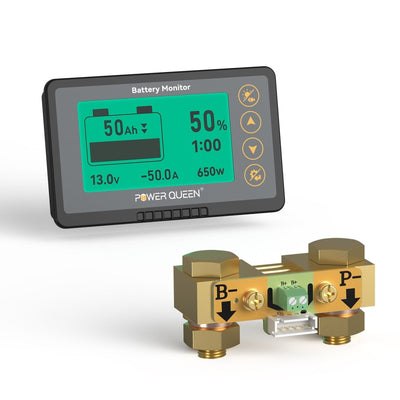

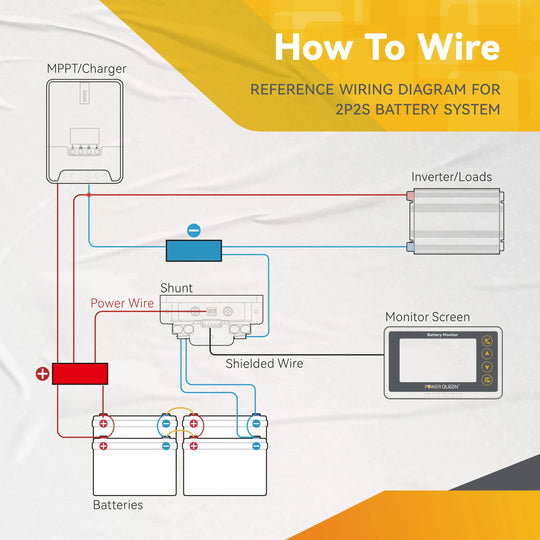
The particular needs of your battery system, including voltage range, communication protocols, and any extra features you might require, should be taken into account when selecting a battery monitor. Furthermore, confirm that the monitor is compatible with the battery type you are using, be it lithium-ion, lead-acid, or another kind.
You may keep track of your battery's condition and performance with a non-Bluetooth battery monitor, which will allow you to act quickly in the event that a problem occurs.
